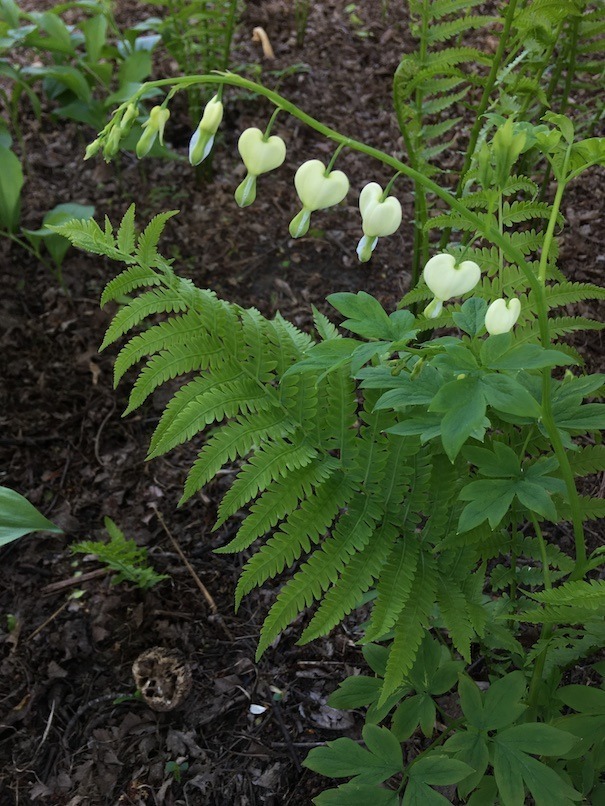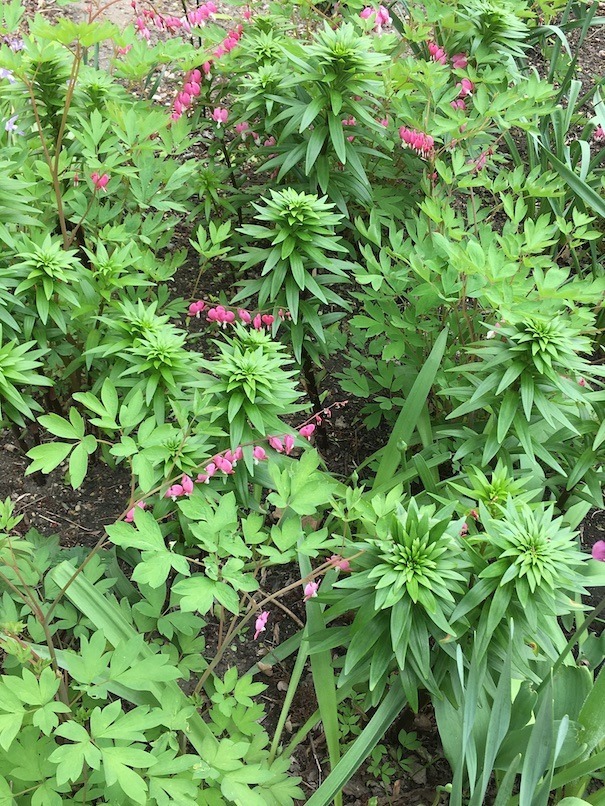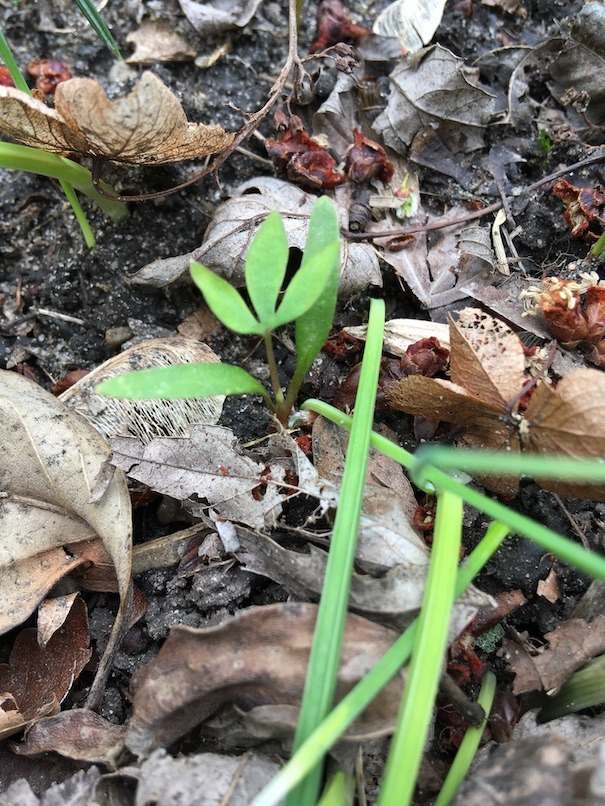The bleeding hearts are going to seed. This is a plant that scatters its seed a little, but is easily controlled. They are very nice around potentially leggy things like roses and lilies.

A month ago today, the bleeding hearts in the full shade of the house were in bloom; the red bleeding hearts started blooming a couple of days earlier. With even a little sun, the soil warms a little faster and plants bloom a little sooner.

If you look closely at the photograph below, you will see several seedlings near the bottom of the photograph, between the bleeding heart and a pair of lilies.

The seedlings have two cotyledons—the simple pair of leaves that start near the ground—and a very distinctive first leaf that has three lobes.

I tend to weed out the seedlings that are not where I want them. It’s really easy at this stage. If I have none coming up where I am hoping for some, I leave some wherever they are for the year. They are much easier to move the second year, as they are a decent size with tuberous roots ready to take on the weather. They are very easy to dig and transplant in the spring.
I have never tried collecting the seeds, but I imagine it would work. The trick would be to catch the seedpods when they are yellowing, but have not yet shattered and scattered their cargo.